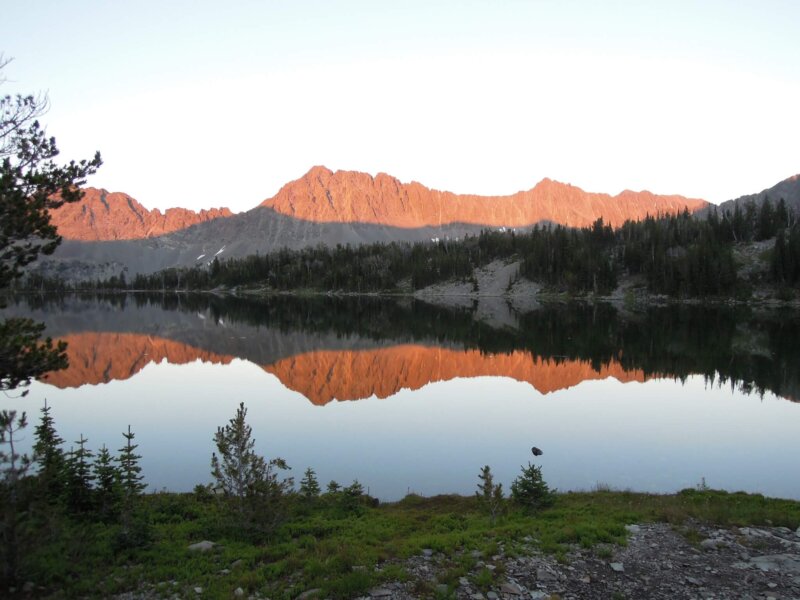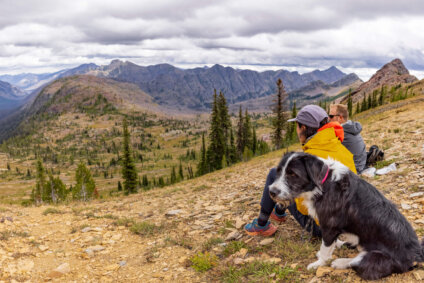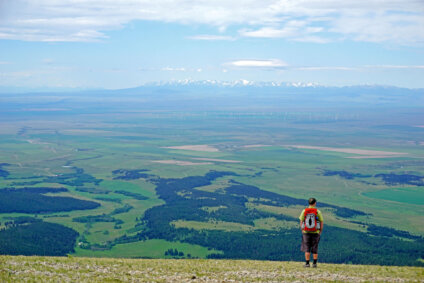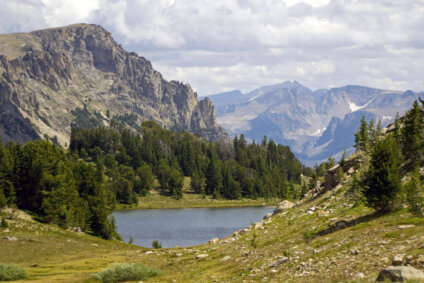Indigenous Voices: Respecting the Crazy Mountains
Crow tribal member Peri Bauerle O'Haire reflects on what this range means to her and her family

This is the first installment of “Indigenous Voices,” a series about Montana’s historical tribal lands – today’s public lands – seen through the eyes of tribal members across the state.
As a child, I remember frequently taking the almost three-hour drive east from our house in Bozeman to our HOME in Crow Agency. I remember thinking, for as long as I can remember, how “those mountains” along the way were different. They didn’t have the rolling foothills of the mountains that I was used to seeing in the Gallatin Valley. They often had different weather over them than anywhere nearby. The Crazy Mountains definitely were different.
As I grew up listening to stories about the land that has been a part of our tribe and was now a part of us, the Crazy Mountains stood out to me. I remember my grandpa telling me stories about them and how they were to be respected. I have listened to my mother continue telling those stories to my nieces and nephews, and now we tell my daughters those stories.
The Crazy Mountains are land that has been a part of the Apsáalooke, or Crow, people for generations. They are a part of our history and of us. These mountains hold a special place and deserve to be treated with respect, as we were taught. As you look at them, you can see they are different, special, and have remained much the same for generations, especially towards the upper elevations, where motorized vehicles are prohibited.
My children deserve to feel that connection to their history. My grandchildren and great-grandchildren deserve to feel the awe of this place and the connection to who they are and where they come from.
There are people who want this to change so that more people can “enjoy” these mountains. You can look around at other places that have allowed motorized use and see that as more traffic comes through, the landscape changes drastically. The animals that were so present tend to move farther from the noise and people, the land changes due to the building and expanding of trails, and garbage gets left behind.
Once you have been in the Crazies, or even gotten close to them, your feelings start to change. It has already been said that there are places in these mountains that are sacred sites for the Apsáalooke and should be respected. They should be understood as a church is, a place you may visit but may not drive your car through. When visiting someone else’s church, you would be respectful and treat the place respectfully. You wouldn’t leave garbage behind or deface the walls.
Want to learn more about about the Crow peoples’ connection to the Crazy Mountains? Watch our film “Awaxaawippiia: The Crow Nation’s Sacred Ties.”
The Crazy Mountains deserve that same respect. Just because there are not four walls and pews doesn’t mean that reverence should not apply. These mountains do not belong to anyone, but it is our responsibility to protect them so that future generations can experience that connection and special feelings that these mountains hold. My children deserve to feel that connection to their history. My grandchildren and great-grandchildren deserve to feel the awe of this place and the connection to who they are and where they come from. These mountains are more than a recreational opportunity. They are a part of our culture, a part of who we are, and they deserve to be left as they are.
– Peri Bauerle O’Haire is an early childhood education aide. She lives in Belgrade with her husband and two children.
Stay Connected
"(Required)" indicates required fields


